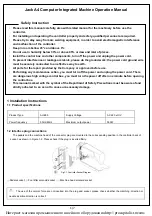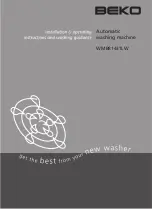
Transportation, packing and storage
5 - 1
5
Transportation, packing and storage
5
.01
Transportation to customer's premises
Within the Federal Republic of Germany, complete machines (with table and motor) are
delivered without packing.
Machines without table (only sewing heads) and machines intended for export are packed.
5
.02
Transportation inside the customer's premises
The manufacturer cannot be made liable for transportation inside the customer's premises
nor to other operating locations. It must be ensured that the machines are only transported
in an upright position.
5
.03
Disposal of packing materials
The packing materials of this machine comprise paper, cardboard and VCE fibre. Proper dis-
posal of the packing material is the responsibility of the customer.
5
.04
Storage
If the machine is not in use, it can be stored as it is for a period of up to six months, but It
should be protected against dust and moisture.
If the machine is stored for longer periods, the individual parts, especially the surfaces of
moving parts, must be protected against corrosion, e.g. by a film of oil.















































